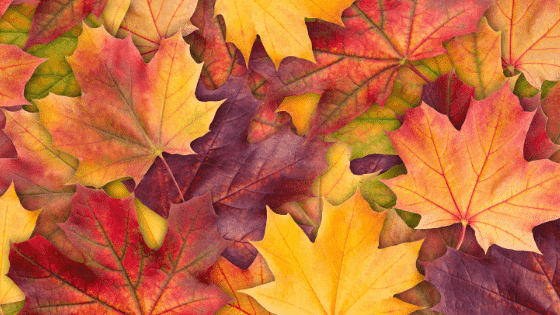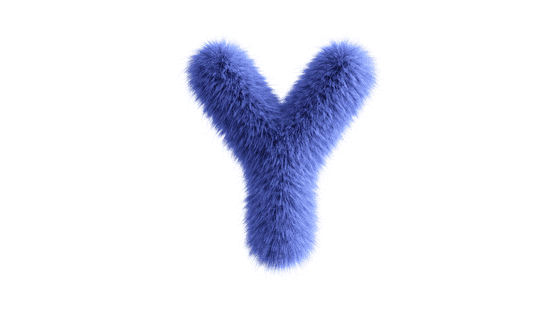Words To Describe Dance – Adjectives For Dance (With Definitions)
Whether you’re a dancer, a choreographer, an enthusiast, or simply a spectator, having the vocabulary to describe the nuances and intricacies of dance can enhance our appreciation and understanding.
This article delves deep into the language of dance, offering a range of words that capture its essence, from the specific movements of ballet to the raw emotions of a contemporary piece.
Words To Describe Dance
- Balletic: Relating to ballet; characterized by grace and elegance.
- Rhythmic: Having a regular or harmonious pattern of beats or movements.
- Fluid: Flowing smoothly and gracefully, without any interruptions or abrupt changes.
- Energetic: Vigorous and dynamic; showing a lot of energy.
- Staccato: Characterized by abrupt or clear-cut movements, often sharp or crisp.
- Lyrical: Expressing emotions in an imaginative and beautiful way, often like a song.
- Ephemeral: Lasting for a very short time, transient, like many dance performances.
- Graceful: Moving in a smooth, relaxed, attractive way.
- Percussive: Dance movements that give emphasis to the rhythm or beat, often with sharp or hard-hitting motions.
- Improvisational: Made up spontaneously without specific preparation.
- Choreographed: Planned out and designed movements in a dance piece.
- Passionate: Showing or caused by strong feelings or emotions.
- Elegant: Pleasingly graceful, sophisticated, and stylish in appearance or manner.
- Athletic: Involving physical strength, agility, and stamina.
- Ecstatic: Overwhelmingly joyful; causing or characterized by a feeling of great happiness.
- Majestic: Having grandeur or beauty, evoking admiration.
- Dynamic: Constantly changing, active, or in motion.
- Vibrant: Full of life and energy; pulsating with vigor and vitality.
- Expressive: Effectively conveying thought or feeling.
- Abstract: Not representing something as it really looks in real life, often used for dances that are open to interpretation.
- Traditional: Pertaining to customs, beliefs, or practices that have been passed down through generations.
- Innovative: Introducing new ideas or methods; creatively different.
- Sensual: Relating to or involving physical sensations or the senses.
- Structured: Organized and arranged in a clear order; following a predetermined pattern.
- Narrative: Telling a story or conveying a message through dance.
- Theatrical: Relating to the theater or performance, often emphasizing drama.
- Kinesthetic: Relating to the sensation of movement or strain in muscles, tendons, and joints.
- Synchronized: Moving or occurring at the same time or rate as something else.
- Intense: Having or showing strong feelings or opinions; extremely earnest or serious.
- Mystical: Inspiring a sense of spiritual mystery, awe, or fascination.
Types of Dance
Dance is a diverse and expansive art form that spans across various cultures and historical periods.
Here’s a list of various types of dances with a brief description for each:
- Ballet: A classical dance form characterized by its graceful and structured movements, originating from the Italian Renaissance courts and developed in France and Russia.
- Jazz: A dance style that originated from African-American vernacular dance, it’s energetic and fun, consisting of unique moves, intricate footwork, and improvisation.
- Tap: A type of dance in which rhythmical sounds are created by shoes fitted with metal at the heel and toe.
- Modern: A free, expressive style of dancing that began in the early 20th century as a reaction to classical ballet’s strictures.
- Contemporary: A fluid dance style that combines elements of several dance genres including modern, jazz, lyrical, and classical ballet.
- Hip-Hop: Originated from street dance styles, primarily performed to hip-hop music, it includes a variety of styles such as breaking, locking, and popping.
- Ballroom: Partner dances that are traditionally performed in a ballroom setting, including styles like waltz, tango, and cha-cha.
- Latin: Dances rooted in Latin American cultures, including styles like salsa, rumba, samba, and mambo.
- Folk Dance: Traditional dances that reflect the life and experience of a group of people of a certain region or country (e.g., Irish dance, Greek dances).
- Belly Dance: Also known as Raqs Sharqi, it’s a Western-coined name for a traditional West Asian dance, mainly characterized by hip movements.
- Bollywood: Originating from India’s vibrant film industry, it combines Indian traditional dance and Western styles.
- Flamenco: A passionate and expressive Spanish dance form that includes singing, guitar playing, dance, and handclaps.
- Swing: A group of dance styles developed with the swing style of jazz music in the 1920s-1940s, with the Lindy Hop being the most famous.
- Breakdancing/B-Boying: An energetic form of street dance that includes intricate body movements, coordination, style, and aesthetics.
- African Dance: Encompasses various traditional dances of African tribes, characterized by rhythmic drumming and large, bold movements.
- Kathak: One of the eight forms of Indian classical dances, this dance traces its origins to the nomadic bards of ancient northern India.
- Odissi: A major ancient Indian classical dance that originated in the Hindu temples of Odisha – an eastern coastal state of India.
- Krumping: A street dance popularized in the U.S., characterized by free, expressive, exaggerated, and highly energetic movements.
- Country/Western: Dances associated with country and western music, including styles like country two-step, and line dancing.
- Tango: Originated in the border areas between Argentina and Uruguay, it’s known for its sensual movements and intricate footwork.
- Salsa: A lively, sensual dance with roots from Cuba, emphasizing rhythm and movement.
- Popping: A street dance and one of the original funk styles that came from California in the 1960s, characterized by quick, fluid movements.
- Locking: Originated on the West Coast in the 1970s, it’s characterized by freezing from a fast movement and “locking” in a certain position.
- Capoeira: A Brazilian martial art that combines elements of dance, acrobatics, and music, known for its quick and complex maneuvers.
Words To Describe A Dance Performance
Dance performances can be described in numerous ways depending on their style, the skills of the dancers, the emotions they evoke, and the choreography’s intention.
Here is a list of words you could use to describe a dance performance that you have seen:
- Mesmerizing: So captivating that it holds one’s attention completely.
- Elegant: Graceful and stylish in both movement and presentation.
- Athletic: Highlighting the physical strength and agility of the dancers.
- Fluid: Smooth and continuous in motion.
- Passionate: Full of intense emotion or strong feelings.
- Dynamic: Exhibiting continuous change, activity, or progress.
- Graceful: Displaying smooth and aesthetically pleasing movements.
- Staccato: Sharp, abrupt, and distinct movements.
- Sensual: Provoking or relating to physical senses, especially touch.
- Intense: Having a very strong effect or felt very strongly.
- Vibrant: Full of life and energy.
- Poignant: Evoking a strong sense of sadness or regret; deeply emotional.
- Expressive: Effectively conveying thought or feeling.
- Innovative: Offering something new or different in terms of choreography or execution.
- Theatrical: Dramatic and exaggerated, often telling a story or creating a scene.
- Rhythmic: Having a consistent and repeated pattern or beat.
- Ephemeral: Lasting only for a short period of time but leaving a lasting impression.
- Technical: Displaying a high level of skill or precision.
- Harmonious: Forming a pleasing or consistent whole, especially concerning the coordination between dancers.
- Raw: Intense, unfiltered emotion or energy.
- Energetic: Displaying a great deal of vitality and force.
- Transcendent: Going beyond ordinary limits; surpassing; exceeding or transcending normal boundaries.
- Enchanting: Delightfully charming or attractive.
- Commanding: Having an authoritative and impactful presence.
- Lyrical: Expressing the choreographer’s or dancer’s emotions in an imaginative and beautiful manner.
- Bold: Daring and brave, not hesitant.
- Captivating: Capable of attracting and holding interest; charming.
- Whimsical: Playfully quaint or fanciful, especially in an amusing way.
- Grounded: Solid, secure movements, often reflecting a connection with the earth or floor.
- Resonant: Evoking emotions, memories, or images, especially beyond the immediate performance.
These words can help provide depth and detail when analyzing, reviewing, or simply appreciating a dance performance.
Words Related To Dance
Just some of the many words related to dance, and not already discussed above, may include:
- Choreography: The art or practice of designing sequences of movements for dances.
- Plié (plee-ay): A ballet move in which the dancer bends the knees while keeping the heels on the ground.
- Pirouette: A complete turn of the body on one foot, typically on the point or the ball of the foot.
- Jeté: A leap in ballet where one leg is thrown to the side, forward, or backward and the other is brushed upward to meet it.
- Tempo: The speed at which a piece of music (and thus, a dance) is performed.
- Improvisation: The act of dancing without planned choreography, often spontaneously generated.
- En Pointe: Dancing on the tips of the toes, typically while wearing specialized pointe shoes (in ballet).
- Adagio: A series of slow and graceful movements in dance, or a section of a pas de deux in ballet.
- Allegro: Fast, lively movements in dance.
- Barre: A horizontal bar at waist level on which ballet dancers rest a hand for support during exercises.
- Rhythm: A repeated pattern of sound or movement.
- Synchronization: Coordination of movement timing to music or to other dancers.
- Demi: Meaning “half” in French, it’s often used in ballet terminology, like “demi-plié.”
- Turnout: The outward rotation of the legs from the hips, resulting in feet pointing outwards.
- Arabesque: A pose in ballet in which the dancer stands on one leg with the other leg extended straight behind.
- Isolation: Moving one part of the body independently from the rest.
- Spotting: Focusing on a single point during turns to prevent dizziness and improve control.
- Pas de Deux: A dance duet, often between a male and female dancer.
- Attitude: A pose in ballet where the dancer stands on one leg with the other lifted, usually bent at 90 degrees.
- Relevé: Rising from any position to balance on one or both feet on at least demi-pointe, which is heels off the floor.
- Grand Battement: A ballet move involving a big kick or a controlled throw of the working leg.
- Enchainement: A combination of steps executed in sequence.
- Fouetté: A “whipped throw.” In ballet, it often refers to a series of fast, whipping turns.
- Extension: The ability to raise and hold a leg extended in the air.
The words provided in this article offer a glimpse into the vast and intricate world of dance, yet they merely scratch the surface.
While words can guide us in our exploration, it’s the experience of dance – whether as a performer or a spectator – that truly resonates, leaving an indelible mark on us.
You may also like:




